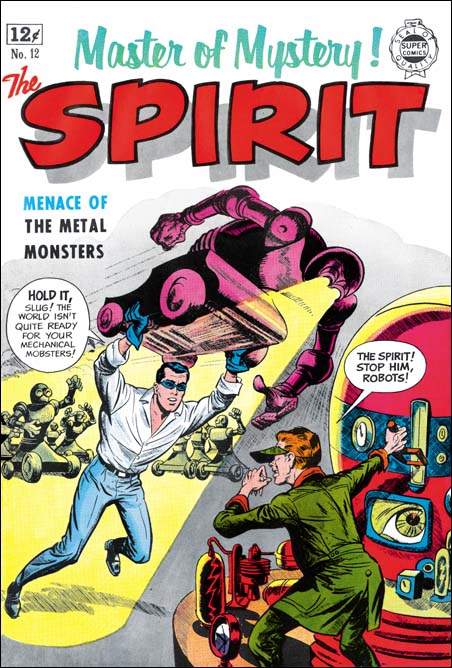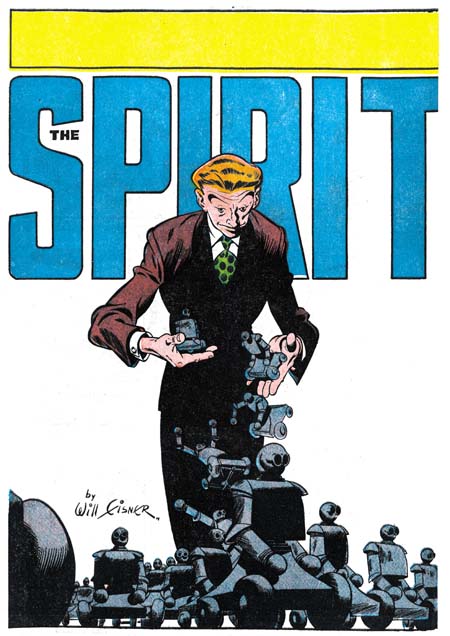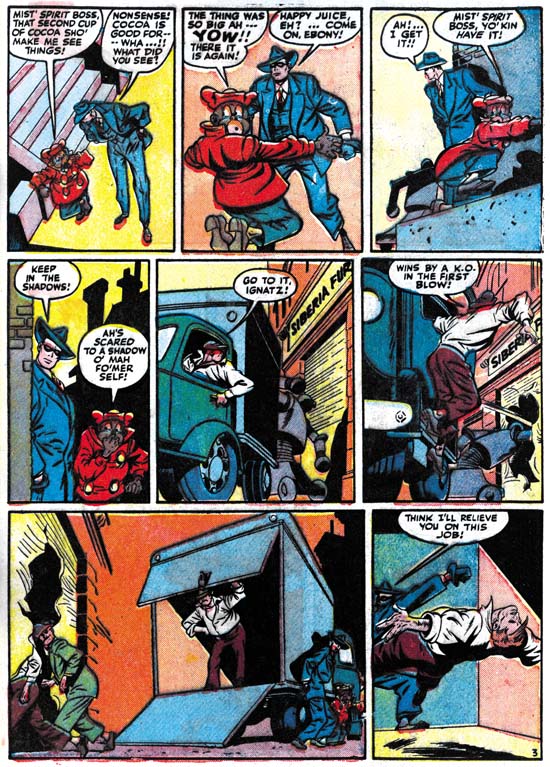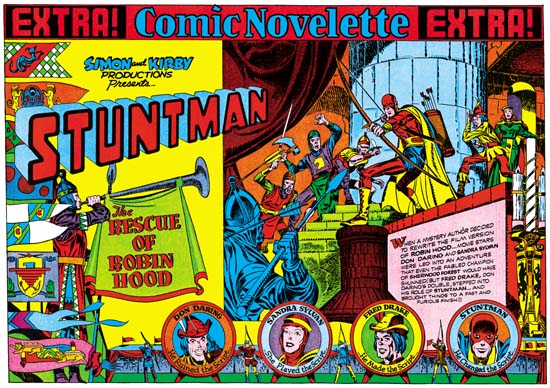After Red Raven Comics #1 (August 1940) Joe Simon and Jack Kirby would do work for Daring Mystery Comics #6 (September 1940). Previously Joe had done some stories for this title, but now he would be its editor. This Timely title did not have anywhere near the success of Marvel Mystery Comics. Although declared a monthly, in fact Daring Mystery suffered a rather sporadic publication schedule.
Recently Marvel has been publishing reprint volumes of some of its golden age titles. This has been much appreciated as the original comics are rare and rather expensive. Volumes for Marvel Mystery, All Winners, Captain America, the Human Torch and Sub-Mariner have already appeared. I understand a reprint volume of USA Comics will also soon come out. However I doubt that Daring Mystery is ever likely to receive this reprint treatment. The issues are filled with features that would last only a few issues, sometimes even a single one, and then disappear.
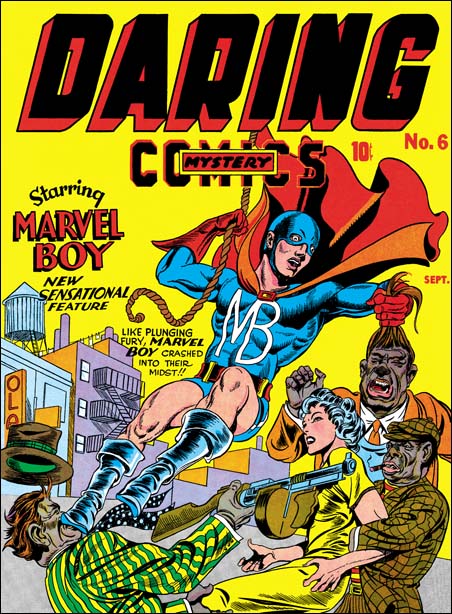
Daring Mystery #6 (September 1940)
But the obscurity of Daring Mystery’s heroes is not the only reason I doubt it will get reprinted. As I see it another problem with Daring Mystery is the cover for issue #6. I really cannot think of another golden age cover that today is likely to provoke more of a negative reaction then this one. The image of a white woman at the mercy of some African American thugs brings to mind the rise of the KKK in the silent movie “Birth of a Nation”. It is true that when America entered the war there would be similar covers involving stereotyped Japanese or German soldiers. But at least then a war can be used to explain such derogatory works.
Not to excuse it, but those were different times. As uncomfortable as the DM #6 cover may make us feel today, we cannot just ignore it. History is meant to help us understand our past, not to remake it in the image of our present day. African Americans were conspicuous for the absence in comics books of those days. I suspect that in casting them as villains, Joe and Jack were just looking for a way to make their cover stand out on the racks. Whatever their intentions were, they would not repeat it. I can think of only one case where an African American was used as a villain by Simon and Kirby. Captain America #9 introduces the Black Talon. The Black Talon got his hand from an African American criminal who was executed. Pretty tame stuff compared to the cover for DM #6.
But apart from the racial overtones, what can be said about the Daring Mystery #6 cover? We have the hero swinging by a rope simultaneously kicking one thug in the face and pulling the hair of another. It would seem that Jack was trying to make this cover as exciting as possible. This was done early in the history of the comic book industry and both Jack and Joe were still learning. To me this was not that great a cover. I guess much of my feeling is due to the kicking and hair pulling. This is not the type of fighting one would expect from a hero, especially during the golden age. Like the racial reference, this would not be repeated in future Simon and Kirby covers.
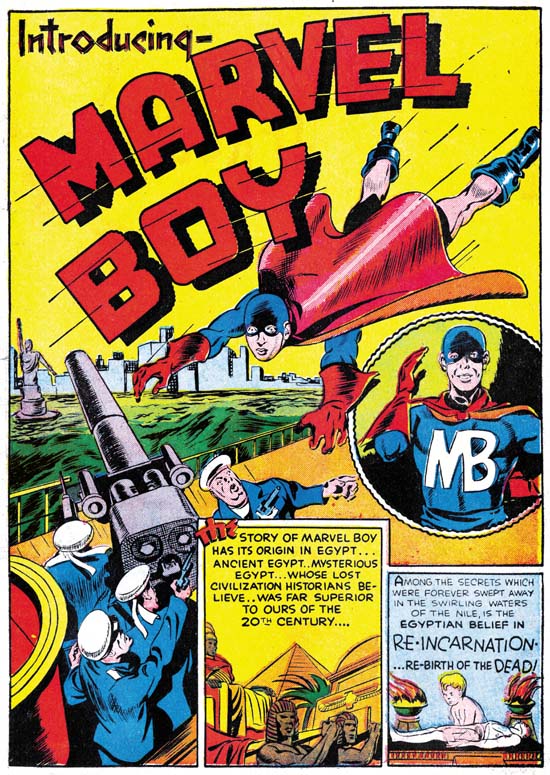
Daring Mystery #6 (September 1940) “Introducing Marvel Boy” page 1 by Joe Simon
Both Joe and Jack were involved in the drawing of two of the interior stories for DM #6, “Introducing Marvel Boy” and “The Fiery Mask”. An interesting pattern is shown by both cases. Joe would do the starting pages of the story and then Jack would do the rest. For Marvel Boy Joe did pages 1 to 3 while Jack did 4 to 10. With the Fiery Mask Joe did 1 to 4 and Jack pages 5 to 10. My interpretation is that as editor Joe wanted to establish the look of the story. Joe had been working with Jack on Blue Bolt so I am sure he was comfortable sharing the drawing with Jack and Knew that the final would look fine. Joe did not use This drawing arrangement with any of the other artist in DM #6.
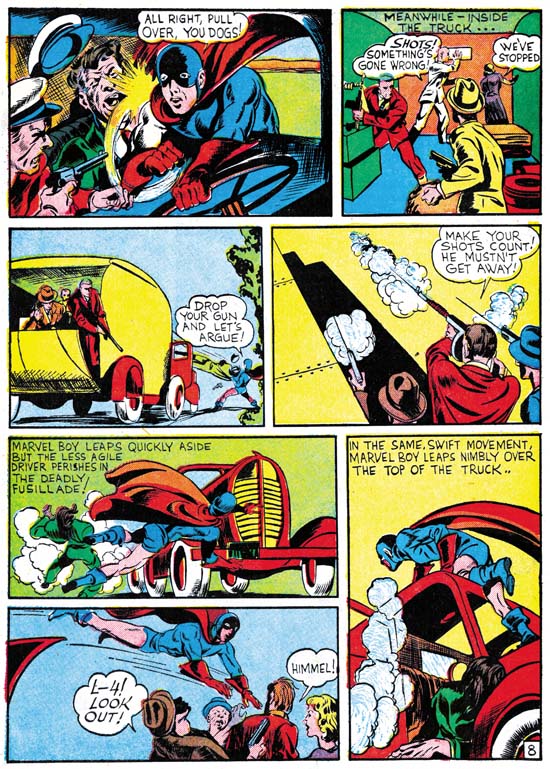
Daring Mystery #6 (September 1940) “Introducing Marvel Boy” page 8
Most of the stories we have seen by Kirby outside of syndication have been science fiction. Now Jack was back to doing something from the superhero genre, and doing a nice job of it as well. Marvel Boy fights an assortment of spies. We are not told what government his foes work for but they all seem to have German accents, say “Heil” while saluting, and one exclaims “Himmel” when attached. To keep things interesting, Kirby keeps changing the view point and makes a lot of use of exaggerated perspective.
Inking on the Marvel Boy story is different on the pages penciled by Joe as compared to those done by Jack. It is tempting to assume that the inking for a page was done by the same artist that did the drawing. But Joe was an editor at Timely and there were other artists available to do inking. The use of various hands in the inking of the same art page was a common practice in the future but it may also be occurring at this early stage.
Marvel Boy had costume features (“skull cap” mask, boots) and a story (fighting spies) that foreshadow a future character, Captain America. Neither Joe or Jack would do any further work on Marvel Boy. Years later there would be one further Marvel Boy feature in USA Comics #7 (February 1943) after which he would disappear completely, like so many other Daring Mystery heroes. In the 50’s a character with the same name would have a short run, but that hero only shares the name with Simon and Kirby’s creation.
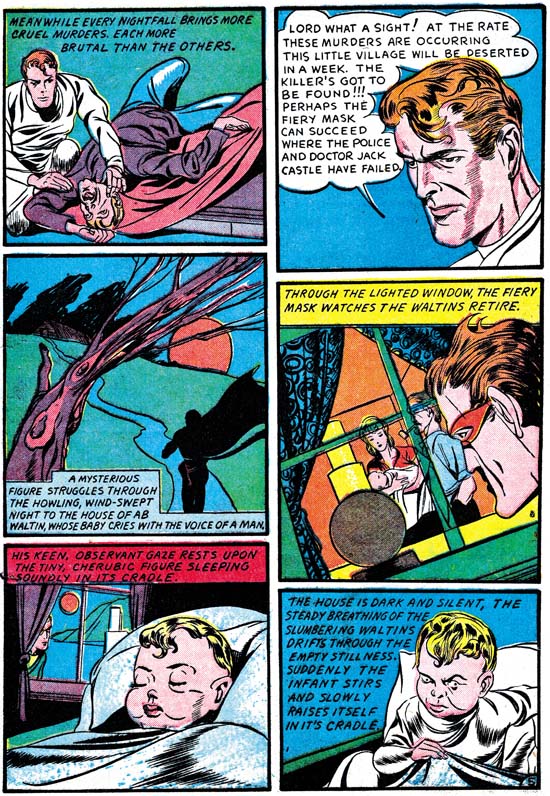
Daring Mystery #6 (September 1940) “The Fiery Mask” page 5
The Fiery Mask first appeared in Daring Mystery Comics #1 (January 1940) is one of Simon’s earliest published comic book work. Although Joe did other work for some of the early issues of Daring Mystery, they did not include the Fiery Mask. Both the GCD and Atlas Tales indicates that the character did reappear in DM #5 (June 1940) but was done by another artist, George Kapitan. I have not seen the contents of this issue and so cannot add my own opinion. While Joe was editor at Timely the Fiery Mask would make two further appearances, here in DM #6 (September 1940) and also in Human Torch #2 (Fall 1940). It is not clear which was done first. DM #6 runs an advertisement for Red Raven Comics #1, not its replacement Human Torch #2. The cover for Marvel Mystery #13 (December 1940) includes a reference to HT #2 comic. Both facts suggest that DM #6 came before HT #2. The Fiery Mask story in HM #2 was drawn entirely by Simon and it is quite possible that it was actually created earlier just not published right away.
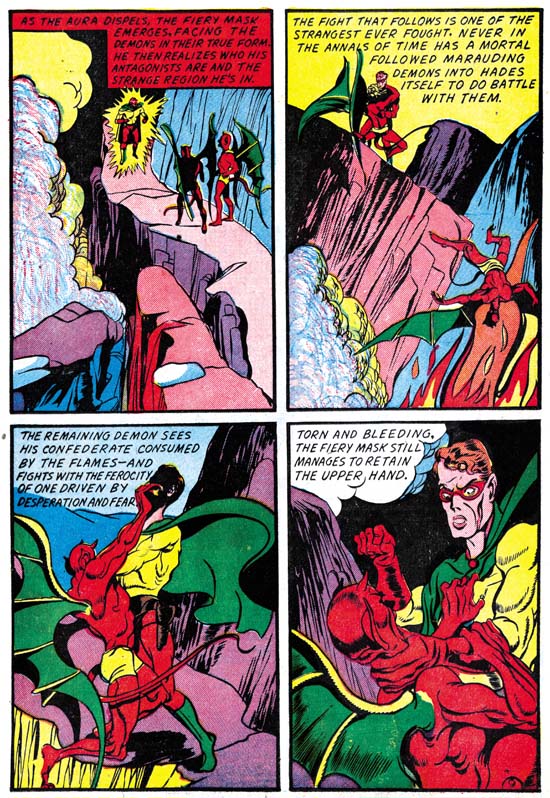
Daring Mystery #6 (September 1940) “The Fiery Mask” page 9
As mentioned above, Joe did the first 4 pages of the Fiery Mask story in DM #6 and then handed the story over to Jack. Jack did an excellent job drawing it. Part of the story involves a child delivered by a demon to a couple to raise. Jack’s transformation of an apparently peacefully sleeping baby in one panel into a malevolent infant in the next is just marvelous. The fight scene between the Fiery Mask and demons from hell is quite exciting.

Daring Mystery #6 (September 1940) “The Fiery Mask” page 10
As with the Marvel Boy story the inking appears to be different on the pages drawn by Jack as compared to those penciled by Joe. As previously discussed this could be due to the inker being the same as the penciler. But care must be taken because Joe may have had other artists available and multiple hands may be involved. However there is an exception to the general rule that the inking is the same on the pages drawn by Jack. On page 10 panels 4 to 6 appear to be inked differently. The penciling was still clearly done by Jack but the inking looks to me like it was done by Joe.
Kirby would do further work for Daring Mystery Comics. However because of the erratic publication schedule for this comic DM #7 would not be released until April 1941 and DM #8 would come out in January 1942. It would be best to discuss what Jack did for those comics later in a more appropriate place.




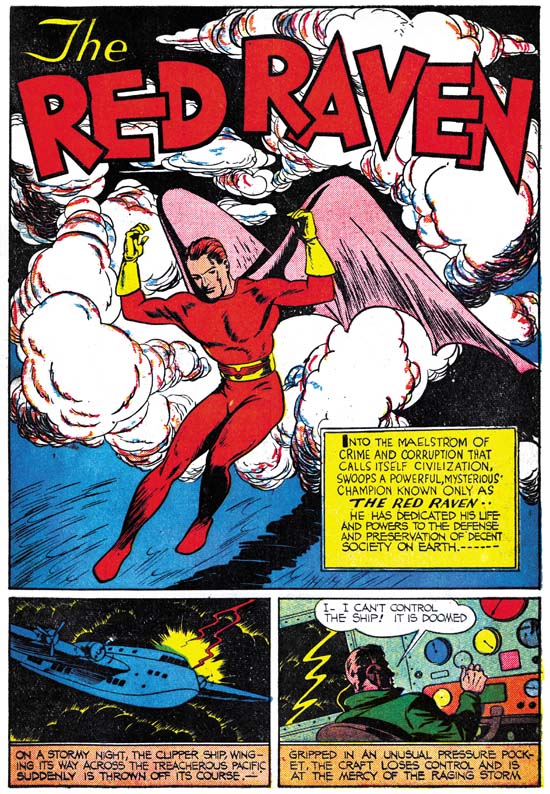
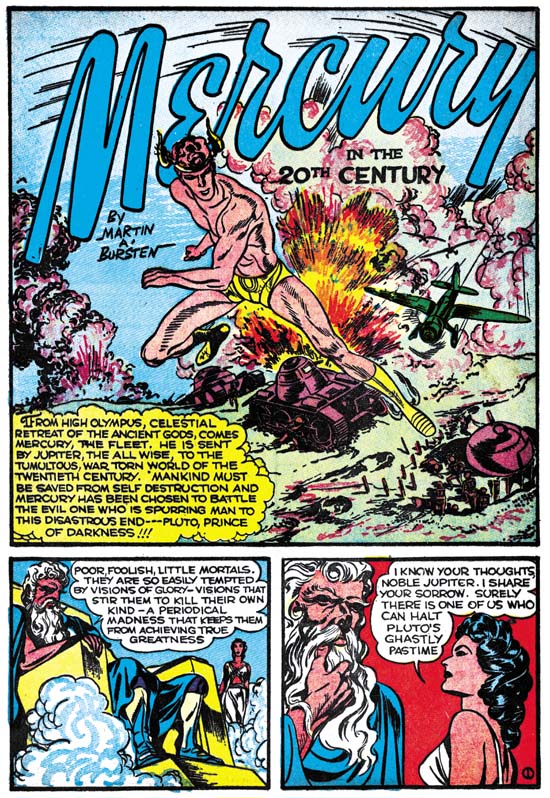

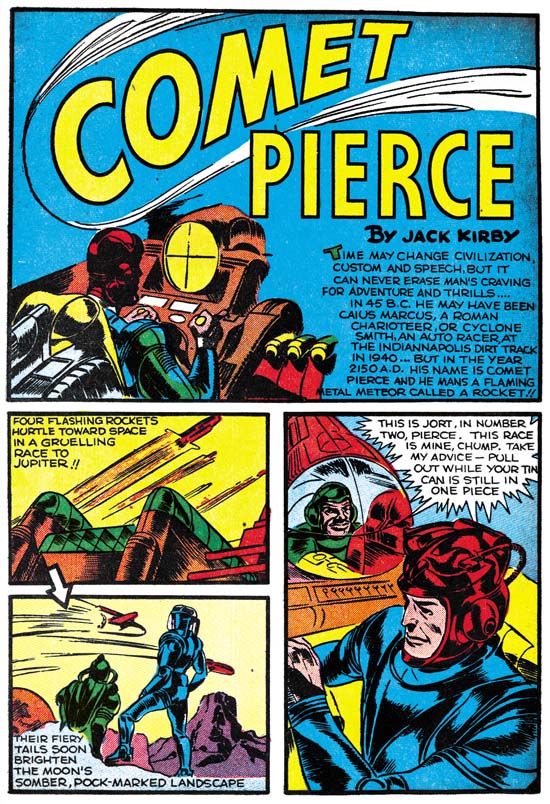
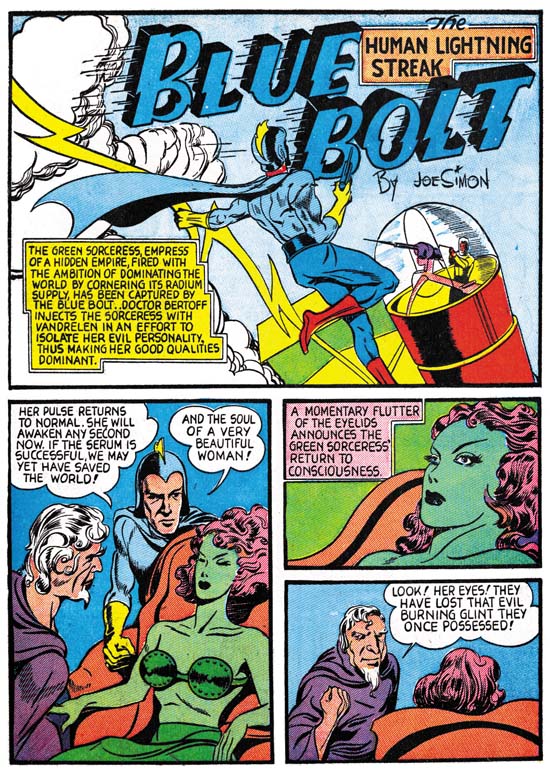
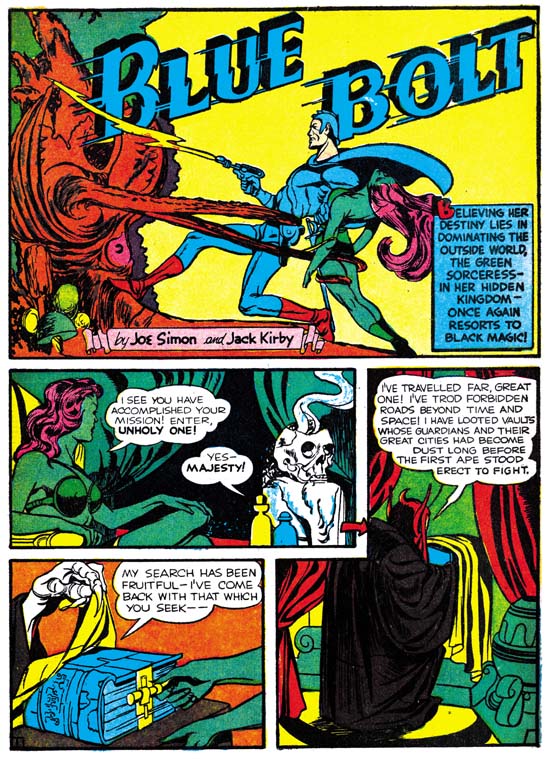
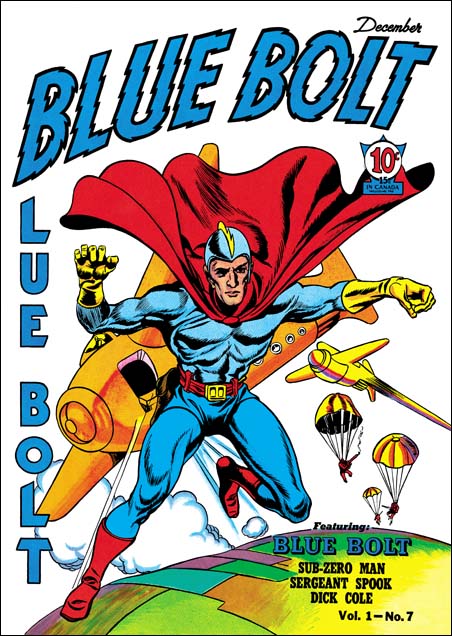
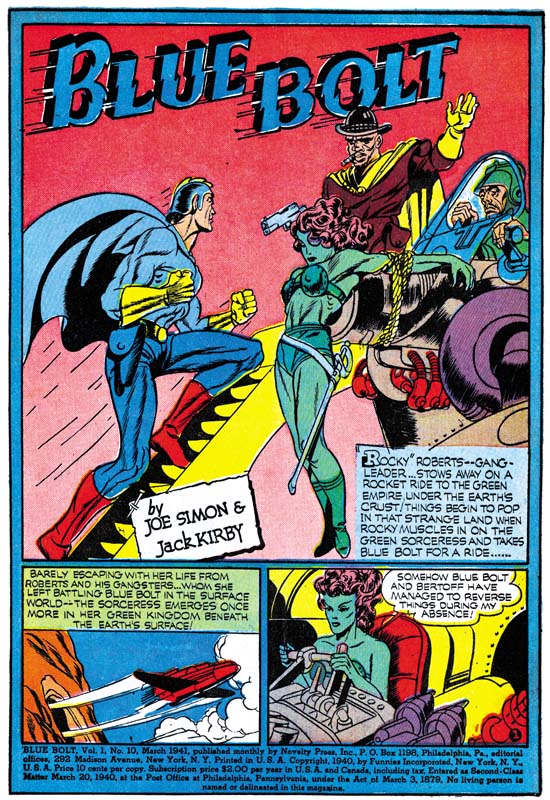
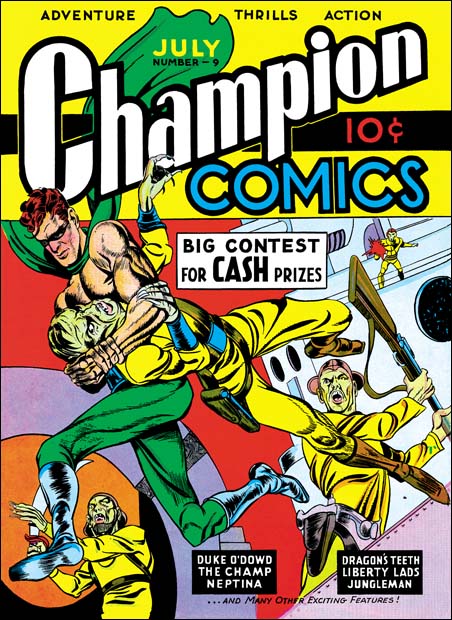
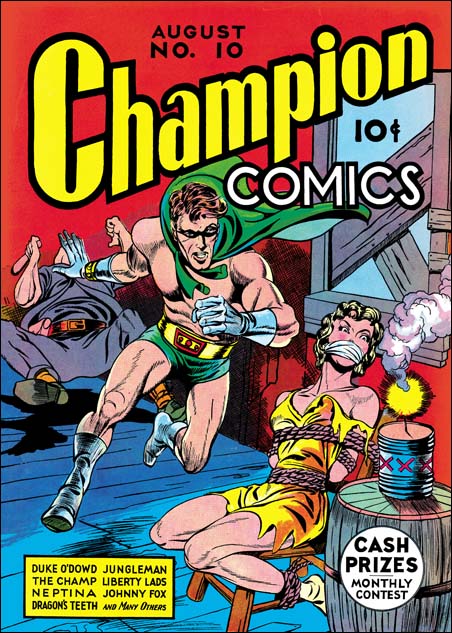
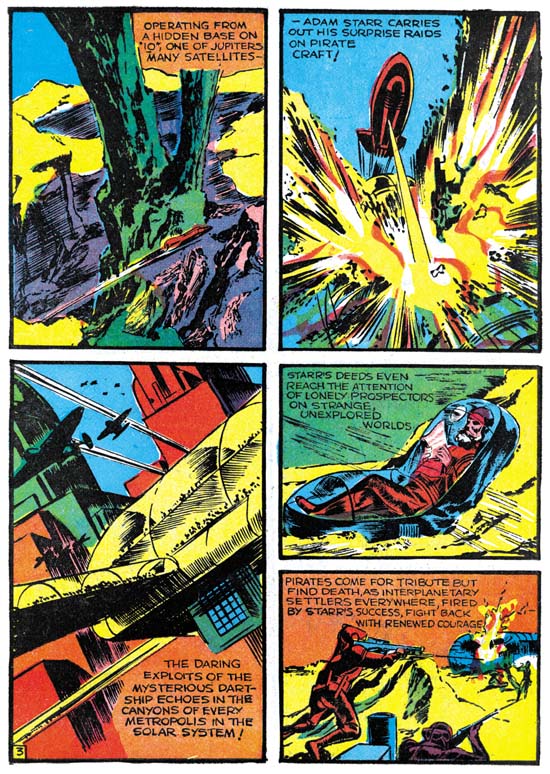
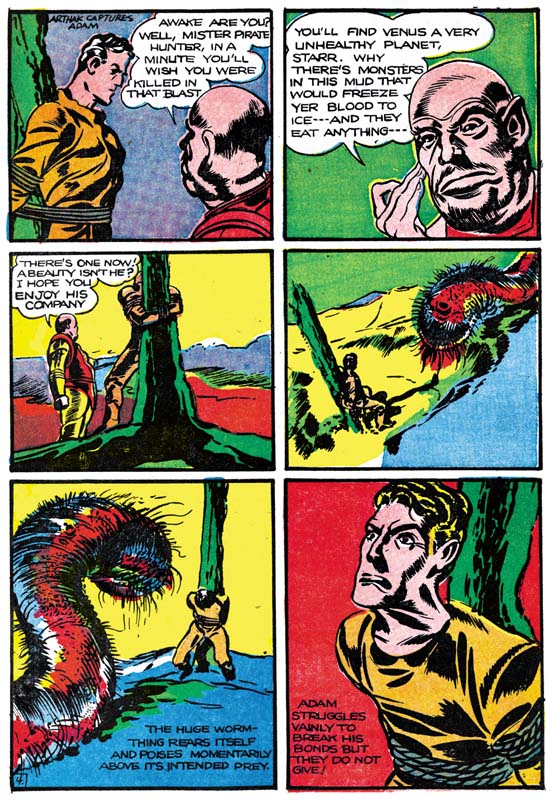

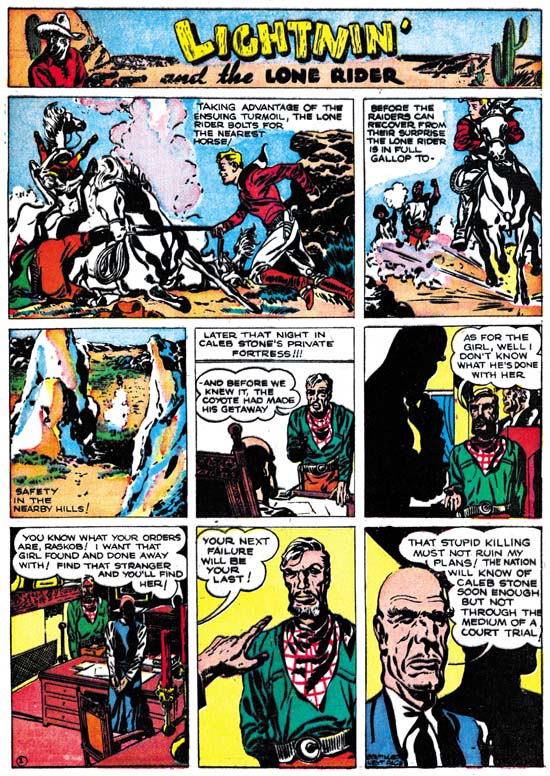
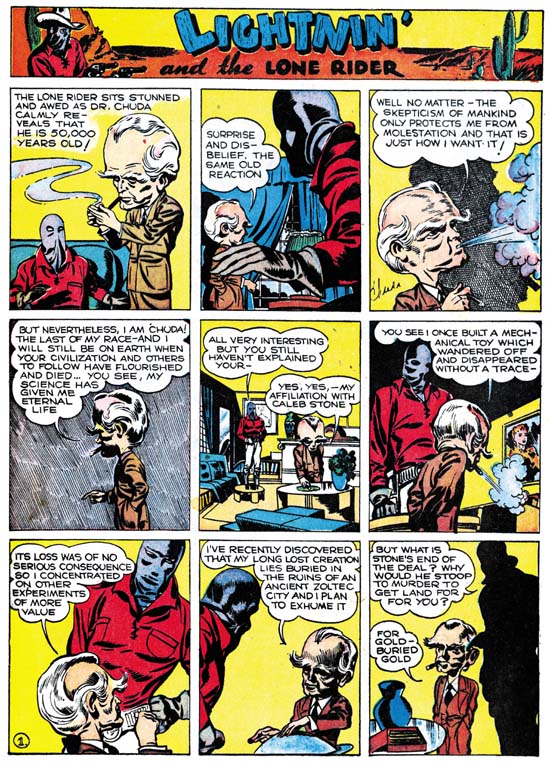


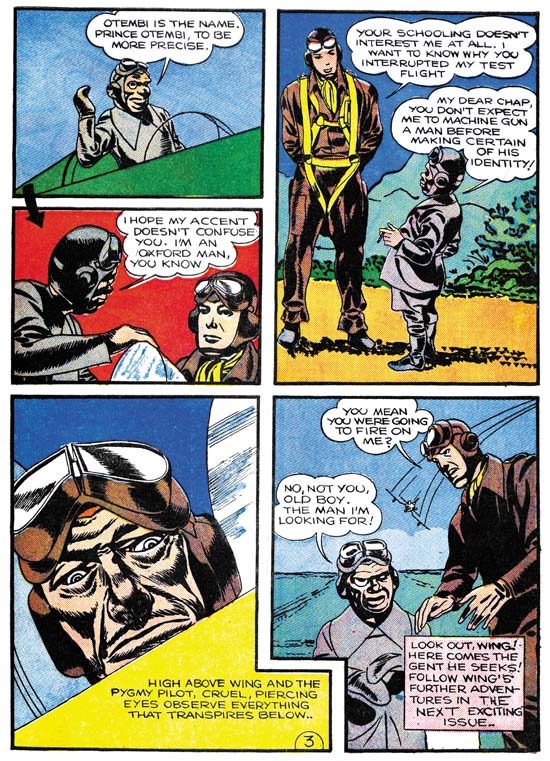
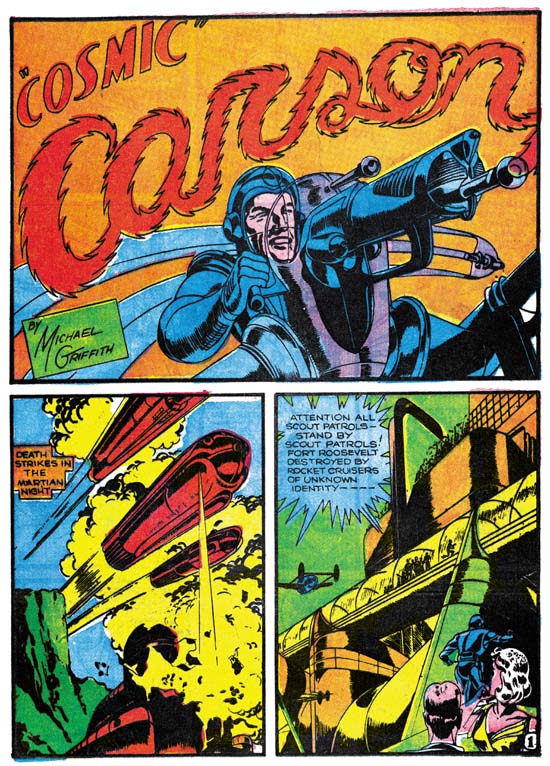
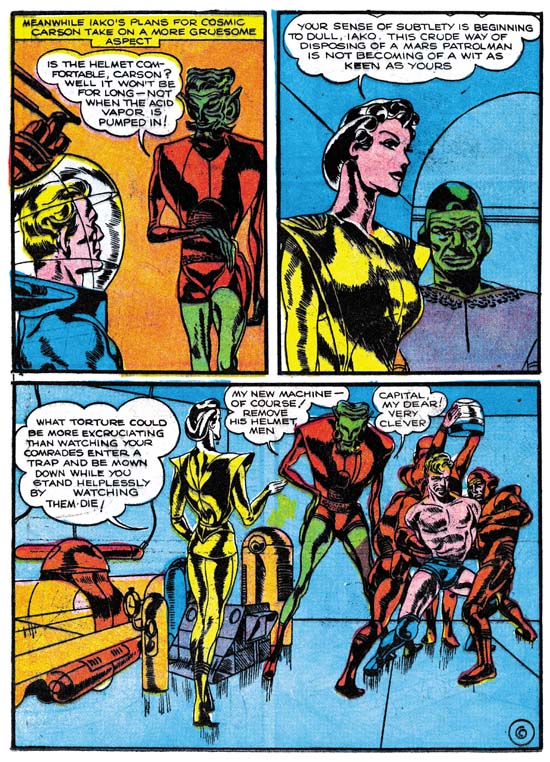
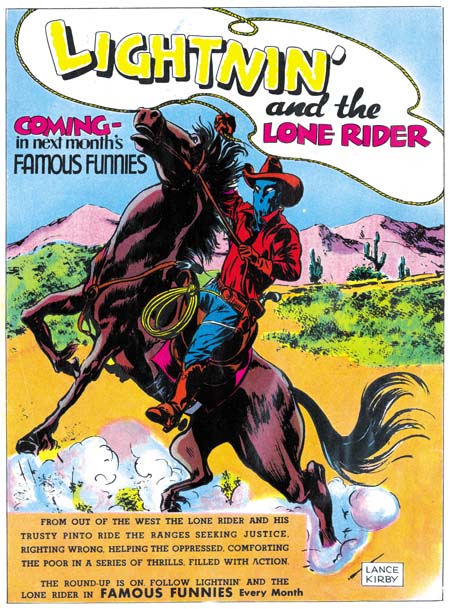
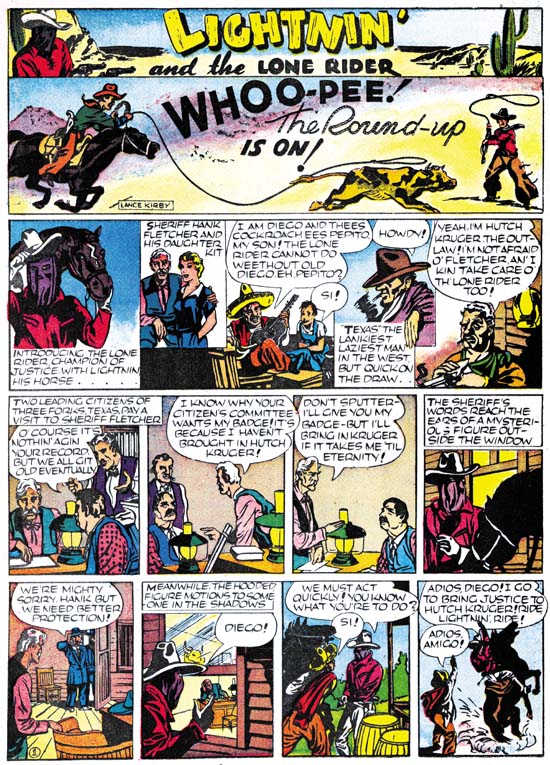
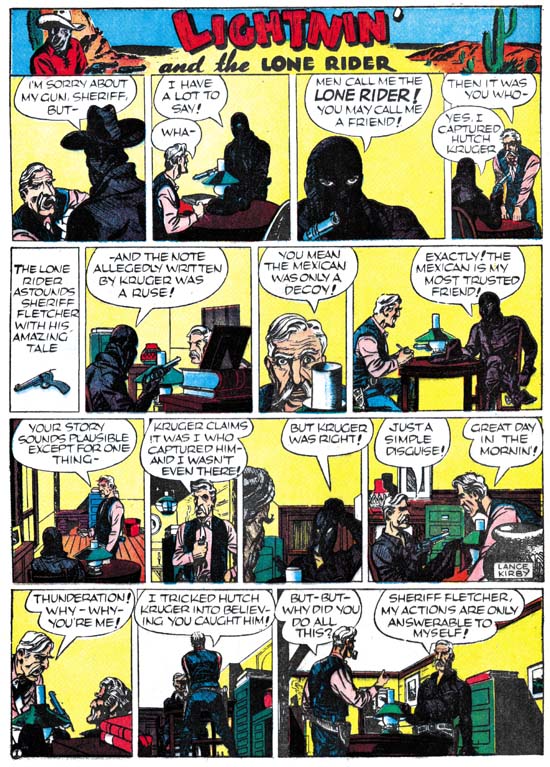
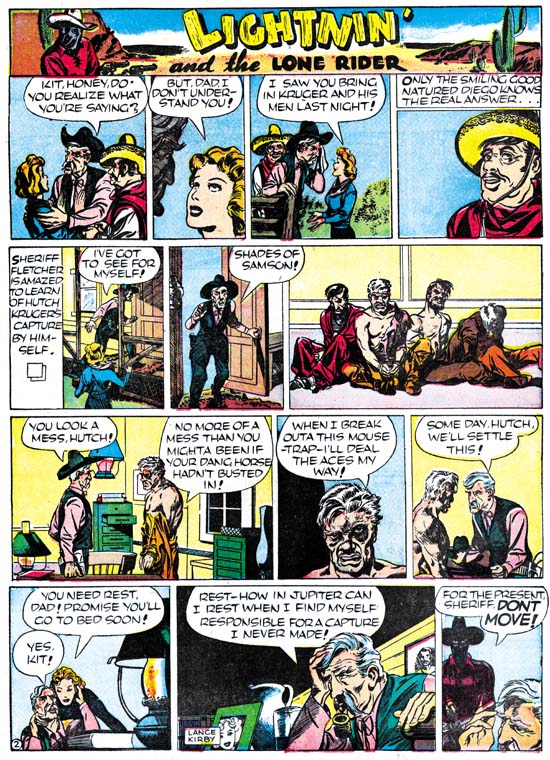
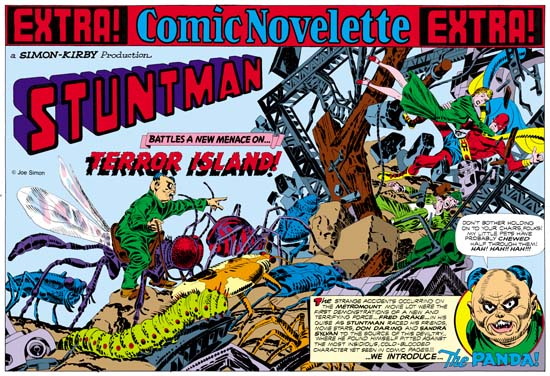
 “Terror Island” introduces a new antagonist, the Panda. Of course Stuntman had faced various opponents in his previous stories but they all were rather generic. None of the earlier villains really stood out and it is clear that none were ever meant to reappear in future Stuntman stories. The Panda seems special and I believe was Simon and Kirby’s first attempt to create Stuntman’s nemesis, the equivalent of the Red Skull for Captain America. Basing a villain on a panda may seem an odd choice, after all what could be more cute and cuddly then a panda, at least in the mind of the public. Sure Jack draws the Panda to look as vicious as possible without loosing his panda look. But the real source for this character is not the bear, but China’s leader Mao Tse-tung (nowadays his name is normally transcribed as Zedong). Today with all the world companies scrambling to get a share of the Chinese market it is easy to forget at that time communist China was a very closed society. As China’s leader and his with description of the U.S. as a “paper tiger” Mao was considered a special menace. Still it is not at all clear whether the Panda really could fulfill the role Joe and Jack were casting him for.
“Terror Island” introduces a new antagonist, the Panda. Of course Stuntman had faced various opponents in his previous stories but they all were rather generic. None of the earlier villains really stood out and it is clear that none were ever meant to reappear in future Stuntman stories. The Panda seems special and I believe was Simon and Kirby’s first attempt to create Stuntman’s nemesis, the equivalent of the Red Skull for Captain America. Basing a villain on a panda may seem an odd choice, after all what could be more cute and cuddly then a panda, at least in the mind of the public. Sure Jack draws the Panda to look as vicious as possible without loosing his panda look. But the real source for this character is not the bear, but China’s leader Mao Tse-tung (nowadays his name is normally transcribed as Zedong). Today with all the world companies scrambling to get a share of the Chinese market it is easy to forget at that time communist China was a very closed society. As China’s leader and his with description of the U.S. as a “paper tiger” Mao was considered a special menace. Still it is not at all clear whether the Panda really could fulfill the role Joe and Jack were casting him for.